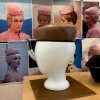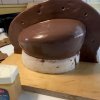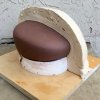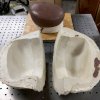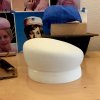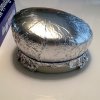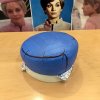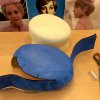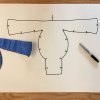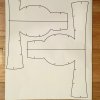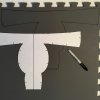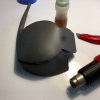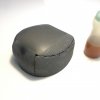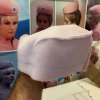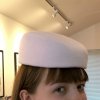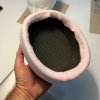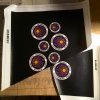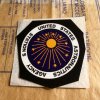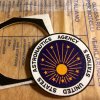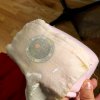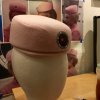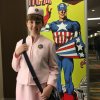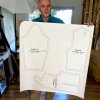JCalhoun
Active Member
When my daughter told me she was interested in cosplay, I was surprised at how excited I got about the idea of re-creating the hostess costume from "2001: A Space Odyssey". Now, just to be clear, this wasn't my daughter's idea at all — she wanted to do something from this decade ... from a video game or something. But I wanted to create the hostess costume.
(To be clear, the costume would be for her, I'm a fat old man , but I wanted to make her a costume.)
, but I wanted to make her a costume.)
For a refresher, in case you are not that familiar with the costume I am talking about, this is a publicity still from the film:

Another publicity still:
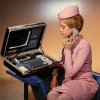
So, the research began.
There are perhaps a good dozen or so photos that I have found. Enough that I was able to begin to break down the costume into parts: hat, jacket, skirt, hose, shoes. There is a patch on both the hat and jacket left breast — the one on the hat is smaller.
The original costumes for "2001" were designed by Hardy Aimes, fashion designer for Queen Elizabeth II. The hat itself probably created by Frederick Fox, a milliner whose handiwork also adorned the Queen (yes, I had to look up that word, "milliner").
I have no idea what materials were used. The hat could be felt since this is a common enough material in hat-making — although I don't know what high-end hats are made of.
The jacket and skirt look, to my eye, to be made of perhaps a pink wool. Wool is certainly an elegant material and my expectations are that Stanley Kubrick would have insisted on the finest quality in every regard.
I am new to sewing, new to costume creation, new to cosplay. With that in mind, I decided from the outset that this would be an iterative exercise. I expect my first attempt will be crap, but I hope to learn enough from the attempt that a follow-on version would be closer to the goal.


(To be clear, the costume would be for her, I'm a fat old man
For a refresher, in case you are not that familiar with the costume I am talking about, this is a publicity still from the film:

Another publicity still:

So, the research began.
There are perhaps a good dozen or so photos that I have found. Enough that I was able to begin to break down the costume into parts: hat, jacket, skirt, hose, shoes. There is a patch on both the hat and jacket left breast — the one on the hat is smaller.
The original costumes for "2001" were designed by Hardy Aimes, fashion designer for Queen Elizabeth II. The hat itself probably created by Frederick Fox, a milliner whose handiwork also adorned the Queen (yes, I had to look up that word, "milliner").
I have no idea what materials were used. The hat could be felt since this is a common enough material in hat-making — although I don't know what high-end hats are made of.
The jacket and skirt look, to my eye, to be made of perhaps a pink wool. Wool is certainly an elegant material and my expectations are that Stanley Kubrick would have insisted on the finest quality in every regard.
I am new to sewing, new to costume creation, new to cosplay. With that in mind, I decided from the outset that this would be an iterative exercise. I expect my first attempt will be crap, but I hope to learn enough from the attempt that a follow-on version would be closer to the goal.
Last edited by a moderator:




